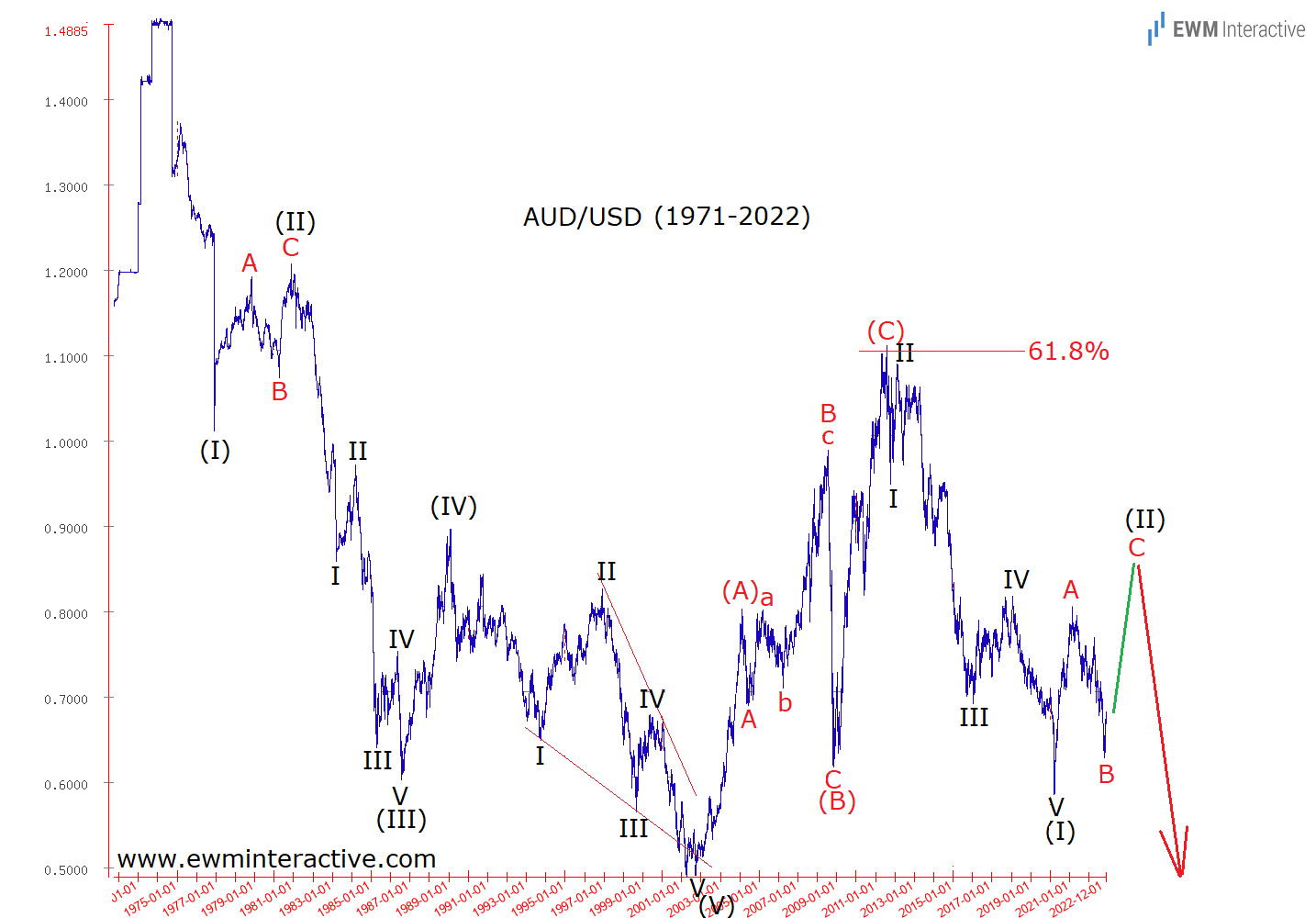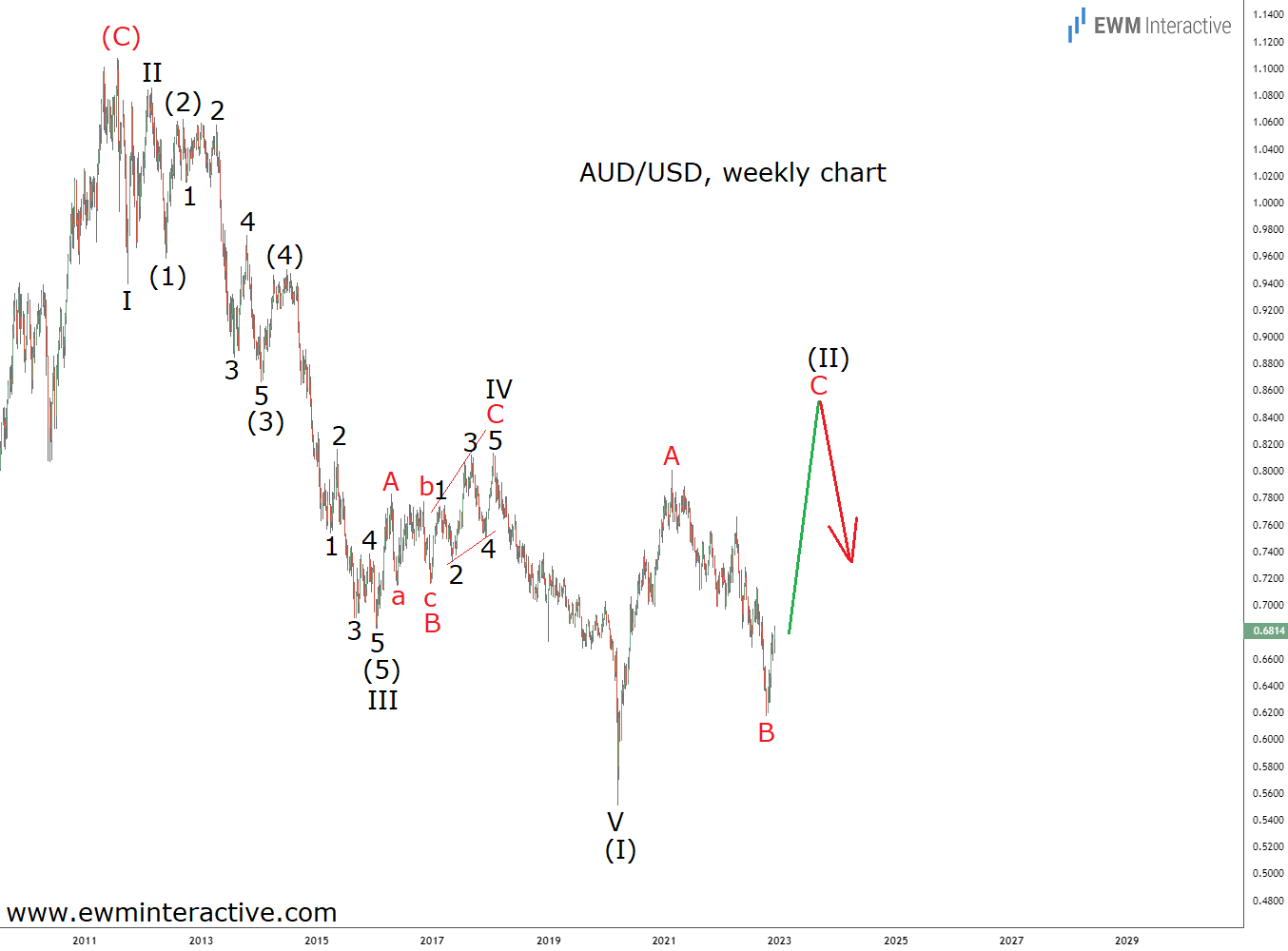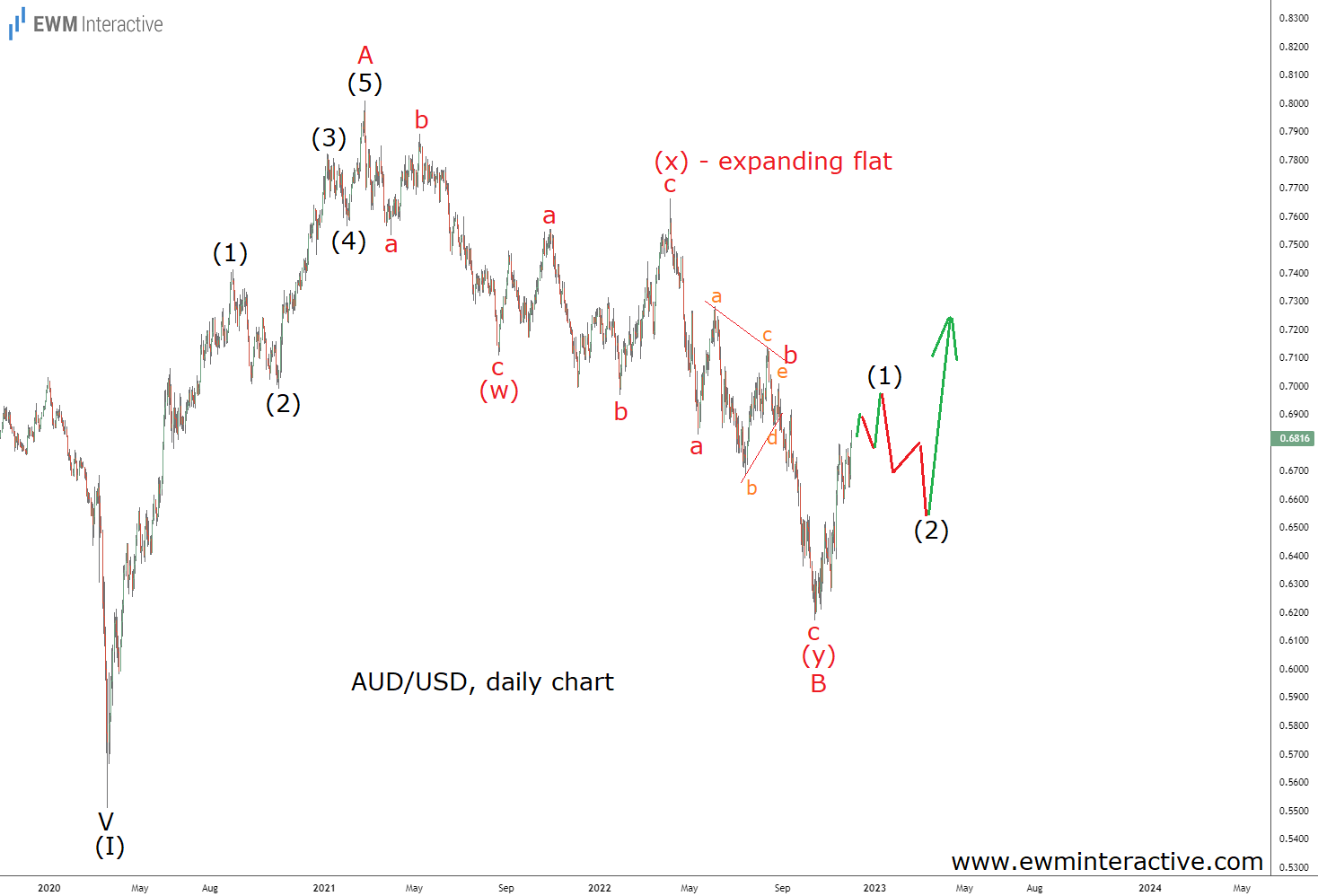More than four years ago, we wrote that there was a “bearish omen” on the historical chart of AUD/USD. There was a complete 5-3 Elliott Wave cycle spanning nearly half a century starting in 1973 when currencies began floating freely against each other. And since the impulsive part of the cycle pointed south, it made sense to expect more weakness. AUD/USD was hovering above 0.7600 at the time, in April, 2018.
And indeed, AUD/USD is currently trading near 0.6800, down by over eight figures in four and a half years. During the Covid-19 panic of March, 2020, the pair barely held above 0.5500. Yesterday, one of our EW PRO subscribers asked about it, so we thought it was time for an AUD/USD update. Here it is.
In the first three decades of free-floating exchange rates, AUD/USD fell from roughly 1.5000 to under 0.4900. What is interesting is that this bear market took the shape of a five-wave impulse, marked (I)-(II)-(III)-(IV)-(V). The five sub-waves of wave (III) are also visible, while wave (V) is an ending diagonal. In accordance with the Elliott Wave theory, this impulse was followed by a three-wave corrective recovery of similar magnitude.
With the exception of the 2008 Financial Crisis, AUDUSD spent the next decade on a positive note. The pair exceeded the 1.1000 mark in 2011, drawing a simple (A)-(B)-(C) zigzag correction in the process. Wave (B) is best counted as an A-B-C expanding flat correction. How did the market know to find resistance in the face of the 61.8% Fibonacci level relative to an impulse that began 40 years ago is a mystery to us. Nevertheless, it did, giving the start of the pair’s next bear market. Which brings us to the weekly chart below.
The decline from 1.1080 in 2011 to 0.5509 in 2020 is another five-wave structure, labeled I-through-V in wave (I). Two lower degrees of the trend can be recognized within wave III. And once again, a corrective recovery appears to be in progress in wave (II). So far, it seems we’ve only seen its first two waves, A and B, which means AUDUSD can be expected to keep rising in wave C.
Wave C is supposed to exceed the top of wave A, putting targets between 0.8000 and 0.9000 within the bulls’ reach. From the current level of 0.6800, that would be a rally of 18% to 32% or 25% at midpoint. Not bad for a currency rate. But let’s dig deeper and take a look at the daily chart below.
The daily graph of AUD/USD clearly show that the surge from 0.5509 to 0.8007 is an impulse pattern, marked (1)-(2)-(3)-(4)-(5) in wave A. The following choppy and overlapping decline to 0.6170 is best viewed as a (w)-(x)-(y) double zigzag, whose wave (x) is an expanding flat. Wave ‘b’ of (y) is a triangle correction. If this count is correct, wave B down is officially over and wave C up has begun. More upside makes sense in the months ahead.




